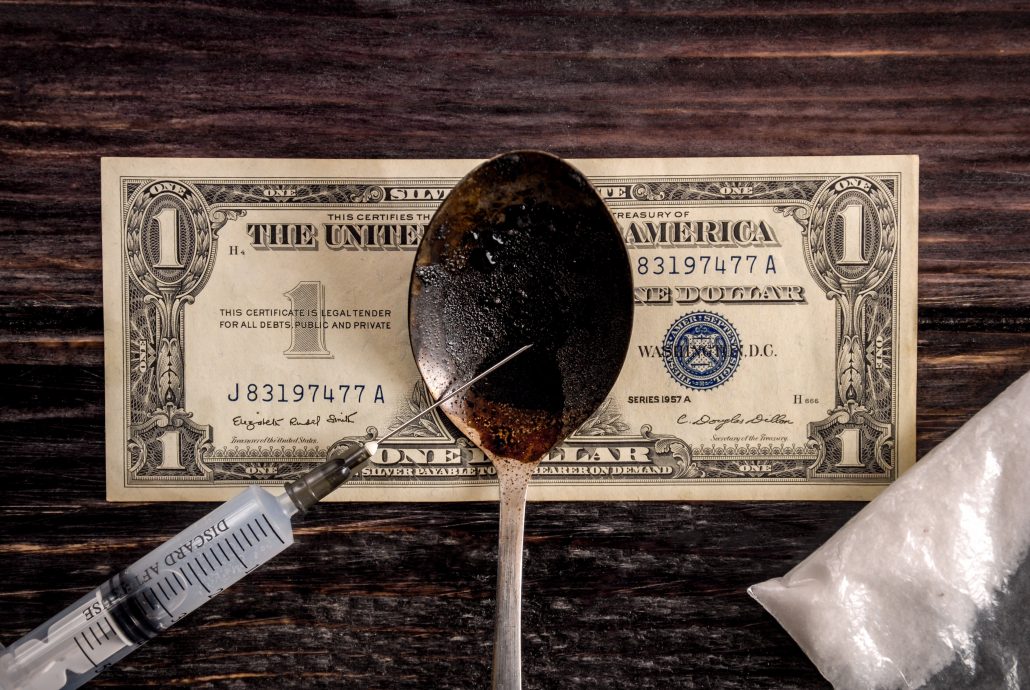When we talk about the opioid epidemic in America, we talk a lot about the cost of human life. Over the last few years, the outbreak of heroin use has continued to rise. This kind of inflation has come at the price of tens of thousands of lives each year lost. 2017 is already considered the worst year for overdose deaths in American history. There is no way we could possibly put a value on the lives of those lost. We can’t give a consultation on the damage their deaths have done to families and communities across the country. But looking at how heroin and opioids have hurt the economy gives us another means to measure the true cost of the opioid crisis.
We already know we’ve gone well over budget with the failed War on Drugs. While dollar amounts will never compare to the devastation of losing loved ones, maybe it can add another layer of perspective to the issue. So, how has heroin addiction hurt the economy?
How Heroin Hurts the Economy
It is actually complicated trying to identify exactly how heroin addiction hurts the economy. There are a lot of unique elements to take into account. For example, many have suspected that even the incredibly high rates of overdose death recorded may actually be under-reported and misclassified.
One study from a few years ago highlights several big-picture ways heroin addiction hurts our economy. This study assesses three “invisible costs” of heroin addiction most people don’t recognize.
-
Medical Costs
We will start with the one that seems pretty obvious. Although, the cumulative effect of heroin addiction on the medical treatment infrastructure is more complex than you might expect.
Utilizing data from the mid-90s, the study estimates that heroin addiction treatment amounted to $5 billion dollars. That was so long ago, it is incredibly easy to predict that tab has shot up drastically in the last decade and a half as heroin use has consistently skyrocketed.
Another thing most people don’t realize is that the types of addiction treatment people have access to will depend on what their insurance will pay for. Because insurance companies are often more interested in keeping costs down than effectively treating addiction, it is safe to bet that a lot of that humble estimation of $5 billion was probably wasted on lackluster facilities and regimens that did not offer innovative and effective treatment. Part of curbing these costs is about support programs that do offer quality care, including comprehensive residential treatment.
According to health research and consulting institute Altarum, healthcare costs alone related to the opioid crisis reached $217.5 billion between 2001 and 2017.
-
Loss of Productivity
Putting a value on something you don’t have is pretty difficult to do. It is hard to adequately propose a price tag for an amount of productivity you can’t measure, but in order to truly grasp how heroin addiction hurts the economy, you cannot ignore the loss of productivity.
One estimate from researches says that the economy missed out on $11.5 billion because of people either:
- Unable to work
- Diverting labor towards addressing heroin addiction
But this is just from a guess of labor costs. It is impossible to quantify all the potential that never becomes realized due to heroin and opioid overdose death. Many people who use drugs and actually do recover end up contributing so much to their communities. So one can hardly imagine what it would mean if the over 72,000 people who died in 2017 from drug overdose were still alive today and what difference they would be able to make.
-
Criminal Activity
On one hand, the United States criminal justice system does provide jobs to millions of Americans. However, the public typically funds these systems. Therefore, the taxpayer is the one paying to put people with heroin addiction through the criminal justice system.
Researchers estimate that criminal activity, adjudication, and incarceration in connection to heroin costs the economy approximately $5.2 billion. Luckily, there is a new trend across the country of police helping addicts get treatment through PAARI programs.
It All Adds Up
When we add up the estimates from the three categories the bill comes out to a staggering $21.7 billion dollars. But things have continued to get worse since that study was published. Another analysis from earlier this year estimates that the opioid crisis cost the country $115 billion in 2017. The organization also claims the economic toll of the opioid crisis between 2001 and 2017 is over $1 trillion.
The economic fallout of heroin and opioids is on track to be over $500 billion from 2018 to 2020!
According to Altarum, the greatest impact on the economy as a result of heroin addiction is the loss of earnings and productivity. Based on the average age of overdose victims, around 41 years old, that cost is estimated at about $800,000 per person.
When we look at all those billions and trillions, it is easy to see how heroin addiction hurts the economy. It all adds up to a truly tragic reality we face as a nation. However, the opportunity to put some of this money toward other endeavors should be a huge financial incentive that our leaders to make some much-needed changes. It’s just one more reason we should be taking meaningful actions to prevent heroin addiction and provide safe and effective heroin detox and holistic treatment options.
In the end, no amount of money can replace those who lose their lives to addiction. We can look at how these tragedies translate to transactions, but nothing is more valuable than helping those who suffer find the path toward a better future. True happiness and lasting recovery are absolutely priceless.


